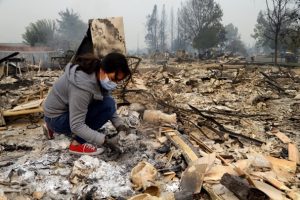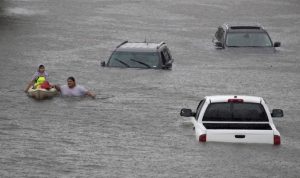 This has been a tough year for the planet and our climate. With rising air and sea temperatures across the globe, we’re seeing more intense hurricanes and wildfires. But the flooding from Hurricane Harvey in Houston and the devastating fires in California’s wine country are made worse by our land use patterns.
This has been a tough year for the planet and our climate. With rising air and sea temperatures across the globe, we’re seeing more intense hurricanes and wildfires. But the flooding from Hurricane Harvey in Houston and the devastating fires in California’s wine country are made worse by our land use patterns.
As I wrote about during the Harvey floods, the Houston sprawl exacerbated the damage by paving over natural floodplains that could have absorbed some of the excess rainwater. And now in the Napa and Sonoma wine country, we’re seeing sprawl neighborhoods of single-family homes adjacent to fire-prone wilderness areas taking the brunt of the destruction.
 Both types of disasters are going to become more common and intense in the coming years, as the planet warms even more. And that means we’re going to need to re-adjust our land development patterns with less sprawl and more infill.
Both types of disasters are going to become more common and intense in the coming years, as the planet warms even more. And that means we’re going to need to re-adjust our land development patterns with less sprawl and more infill.
In flood-prone areas, we’ll need more natural floodplains by concentrating development in the urban core and not allowing more sprawl. And in fire-prone areas, we’re going to need more defensible space between wildlands and sprawl, with more focused growth in our city centers that are protected somewhat from these fires by the urban ring.
How do we achieve these goals? Absent strong land use controls, such as urban growth boundaries and deregulation on local land use policies, we can achieve them through pricing. Examples include ending subsidized insurance for sprawl in flood- or fire-plains and levying higher fees on developments in these areas to cover the costs of the inevitable disasters.
Ultimately, more compact infill development and less sprawl will help make our cities and towns more resilient in the face of worsening climate change. It will take political will, perhaps motivated by these recent disasters, to get us there.


